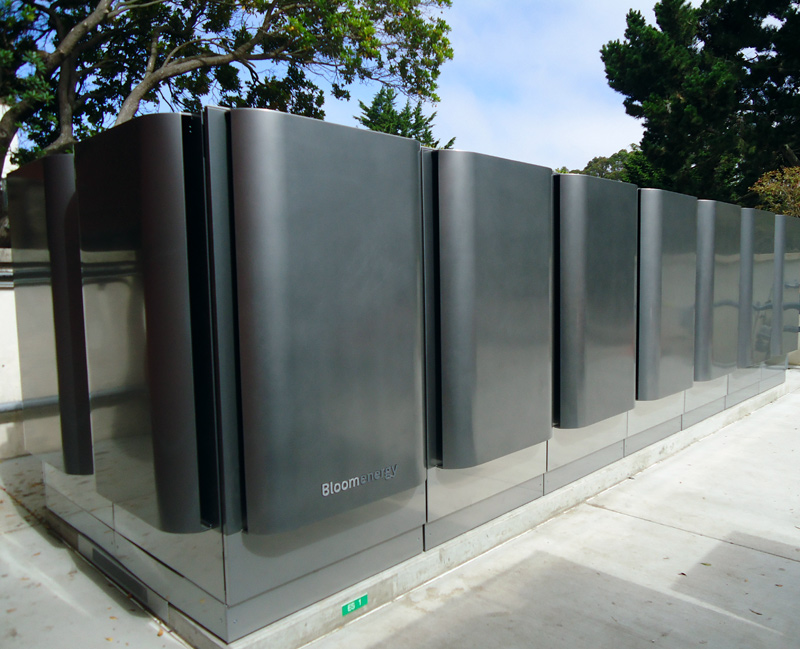Honda has an impressive history of achieving their energy sustainability goals. In 2010, Honda reached their voluntary goal set in 2006 to reduce global CO2 emissions from global products by 10% compared to 2000 levels. In June 2011, Honda expanded this commitment and pledged to reduce CO2 emissions by 30% by 2020 compared to 2000 levels. As part of this initiative, Honda installed a 1MW Bloom Energy system on its Torrance, California campus that will produce clean, reliable energy and significantly reduce carbon footprint from Honda’s operations in the region.
Why Bloom?
Bloom Energy Servers provide a number of environmental and economic benefits compared to traditional grid power for Honda. For each MWh of energy the fuel cell system generates, CO2 emissions will be reduced by 18-25%. Over a project life of ten years, the energy servers will reduce Honda’s carbon dioxide emissions by approximately 16 million pounds. Fuel cells convert fuel into electricity through an electrochemical process that is much more efficient than combustion. Bloom’s technology delivers water savings as it requires no water beyond an injection of 240 gallons at start-up. Compared to the average water demands of California power plants, it is estimated that Honda will save more than 3.25 million gallons of equivalent water used per year.1
Implementation
The Bloom system at Honda’s Torrance location consists of five Bloom Energy Servers, each producing 200 kilowatts of power, and will provide 25% of Honda’s electricity needs for its 1.13 million square feet of office space, research, design and development operations, and parts distribution center on the 101-acre campus. The power generated by the fuel cell system would power approximately 750 average-sized homes each day.
1- Honda Calculations based on Union of Concerned Scientists data.

